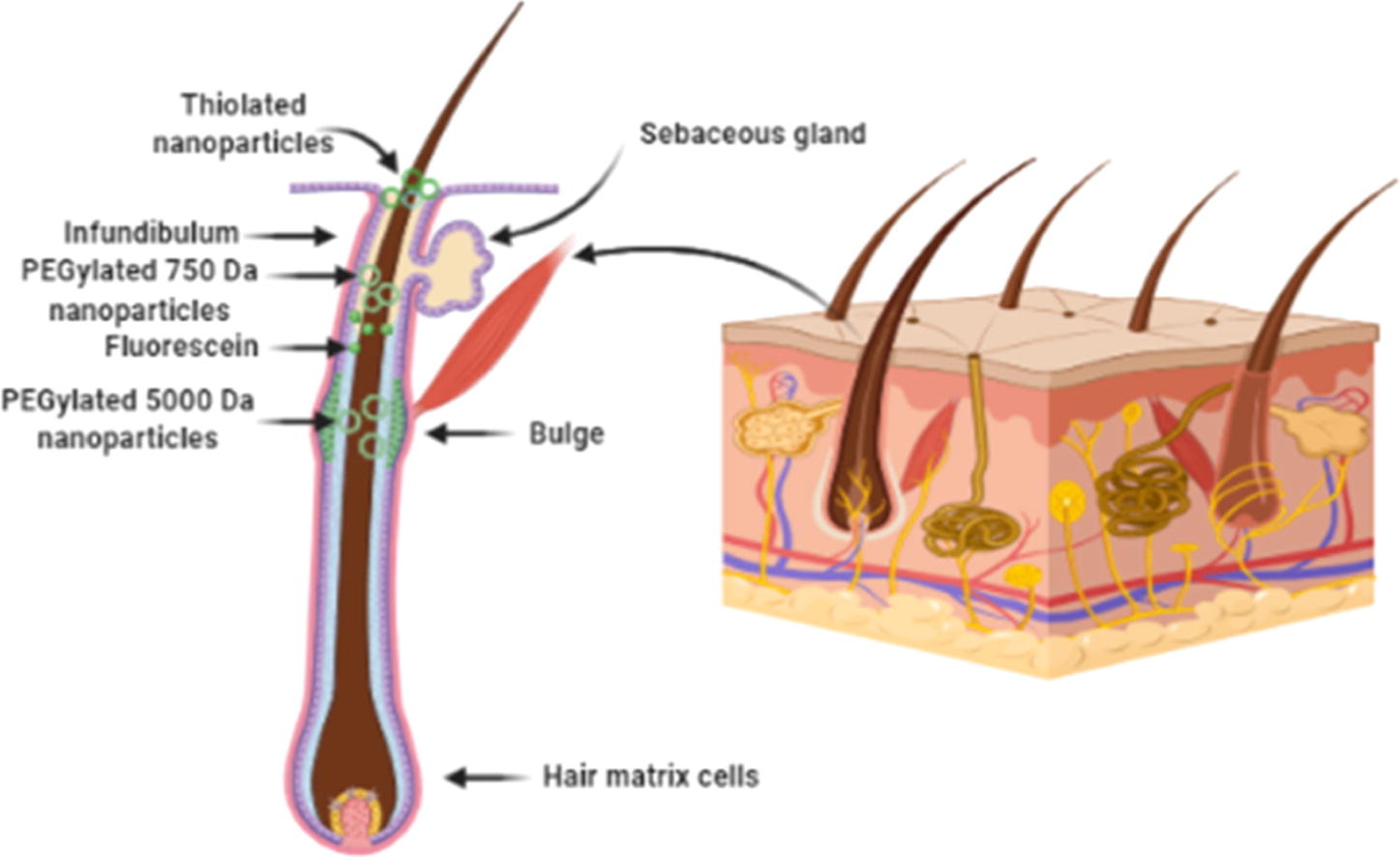Thiolated and PEGylated silica nanoparticle delivery to hair follicles

Targeting drug delivery to hair follicles is valuable to treat conditions such as alopecia’s and acne, and this shunt route may also allow drug delivery to deeper skin layers and the systemic circulation by avoiding the intact stratum corneum. Here, we investigated the effects of nanoparticle surface chemistry on their delivery into hair follicles by synthesizing fluorescent thiolated silica nanoparticles and functionalizing with 750 Da and 5000 Da methoxypolyethylene glycol maleimide (PEG).
Thiolated silica nanoparticles bind to hair and the outer skin stratum corneum.
PEGylated silica nanoparticles penetrated into the follicle.
Particles decorated with larger molecular weight PEG (5000 Da) penetrated deeper than when coated with PEG 750 Da, despite their increased size.
Whilst particle size is known to affect deposition into hair follicles, we show that particle surface chemistry is also an important determinant of follicular targeting.
Particles can be designed to penetrate to specific depths in the follicle, to allow better targeting of drugs.
The stability of the nanoparticles in skin homogenate was verified before tape stripping of porcine-dosed tissue showed the distribution of the free fluorescent dye and different nanoparticles in the skin. Analysis of microscopic images of the skin sections revealed penetration of nanoparticles functionalized with PEG into the appendages whereas thiolated nanoparticles stayed on the surface of the skin and were removed by tape stripping. Nanoparticles functionalized with PEG 5000 Da penetrated deeper into the hair follicles compared to counterparts functionalized with PEG 750 Da. PEGylation can thus enhance targeted delivery of nanoparticulates into hair follicles.
Article Information: Jamila H. Al Mahrooqi, Vitaliy V. Khutoryanskiy, Adrian C. Williams. International Journal of Pharmaceutics, 2020. https://doi.org/10.1016/j.ijpharm.2020.120130

